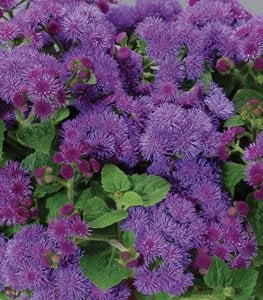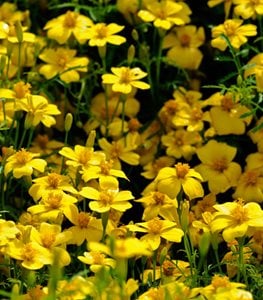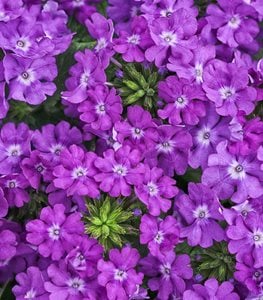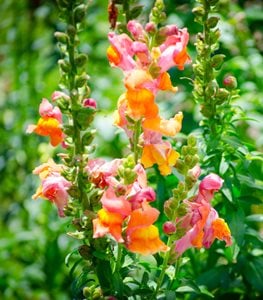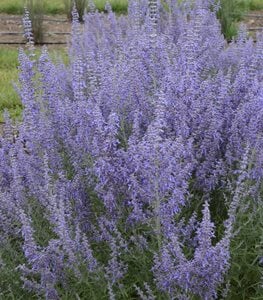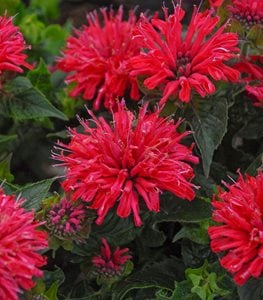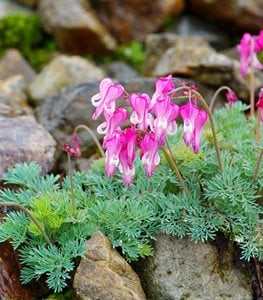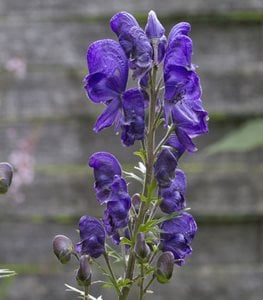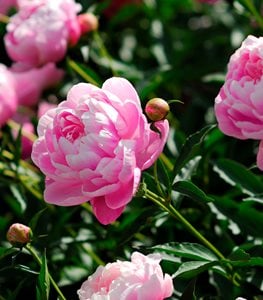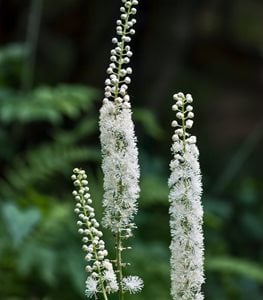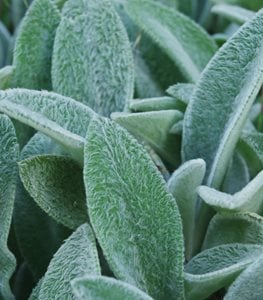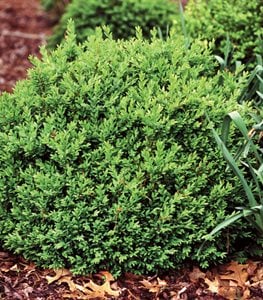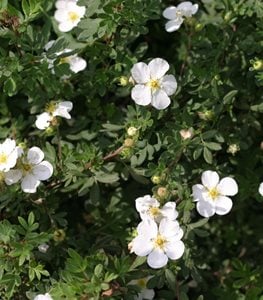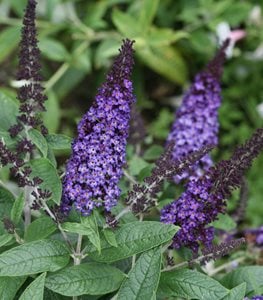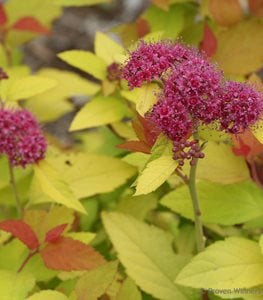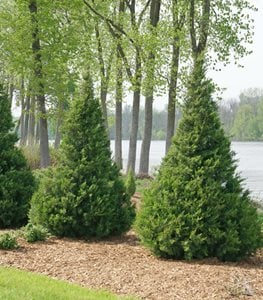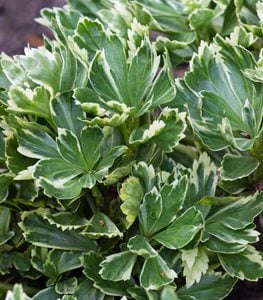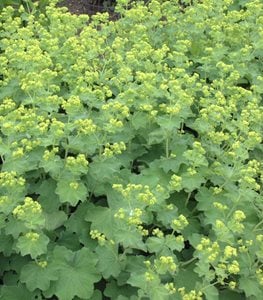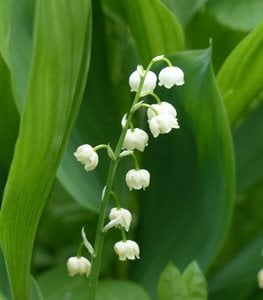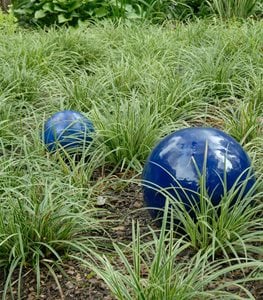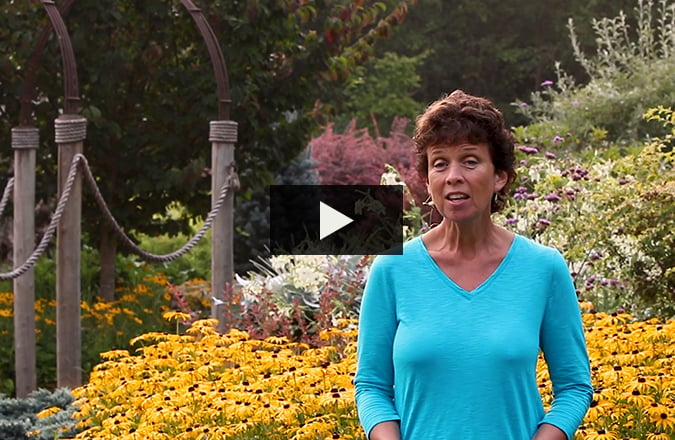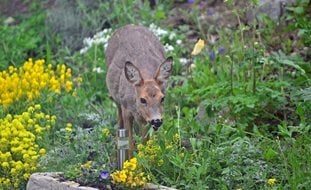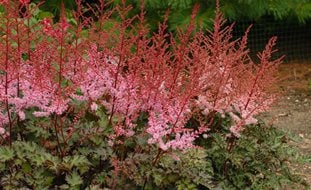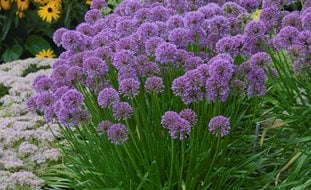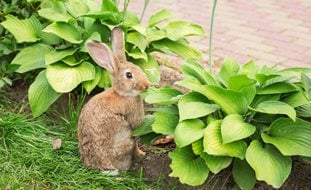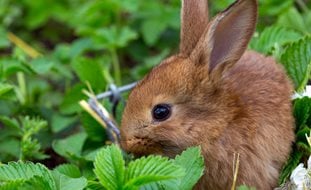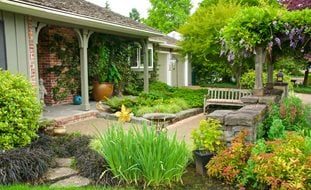20+ Best Deer-Resistant Plants, Flowers & Shrubs for Your Garden
If you have a garden full of plants and flowers that deer love to eat, replace them with these attractive, easy-care alternatives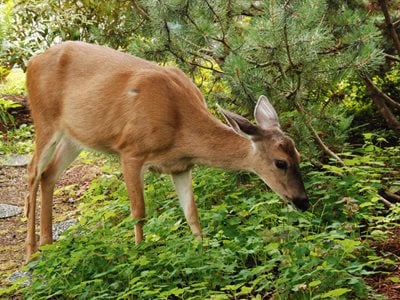
Deer love to graze on many types of groundcovers, especially when new, tender growth emerges in the spring.
Your garden should be a feast for the eyes, not for deer. While no garden is completely deer-proof, choosing the right deer-resistant plants—especially those with strong scents or tough textures—can significantly reduce deer damage.. Many beautiful plants are unappealing to deer due to their poisonous compounds, fuzzy or aromatic leaves, or tough textures. Here are some top deer-resistant picks to consider.
ON THIS PAGE:
- DEER-RESISTANT FLOWERS (ANNUALS)
- DEER-RESISTANT PERENNIALS
- DEER-RESISTANT SHRUBS
- DEER-RESISTANT GROUNDCOVERS
- PLANTS TO AVOID
- DEER-PROOFING TIPS
Note: Deer feeding habits can vary widely depending on region, deer pressure, and food availability. These recommendations are based on general trends, but local results may differ.
DEER-RESISTANT FLOWERS (ANNUALS)
FLOSS FLOWER
Clusters of lavender-blue flowers and rough-textured foliage keep deer at bay. Available in shades of blue, pink, purple, and white.
Zones: 10-11, grown as an annual elsewhere
Exposure: Full sun to partial shade
Bloom time: Late spring through fall
Height/spread: 4 to 36 inches tall, 6 to 18 inches wide
Learn more about growing floss flower.
SIGNET MARIGOLD
All varieties of marigolds are a turnoff for deer because of their strong, pungent scent. However, signet marigolds (pictured) have a lighter citrusy smell and flavor, making them popular for culinary use.
Zones: 9-10, grown as an annual elsewhere
Exposure: Full sun
Bloom time: Late spring until frost
Height/spread: Varies widely, 6 inches to 4 feet tall, 6 inches to 2 feet wide
Learn more about growing marigolds.
VERBENA
Verbenas are a top pick among flowers that deer don’t like, blooming from spring until frost, if trimmed back in midsummer. The small flower clusters come in a wide range of colors, including white, pink, blue, lavender, purple, dark red, yellow and bicolor.
Zones: 8-11, grown as an annual elsewhere
Exposure: Full sun
Bloom time: May through October
Height/spread: Varies, from low-growing to upright.
Learn more about growing verbena.
SNAPDRAGON
Dramatic spikes of flowers make snapdragons a stunning addition to a deer-resistant garden. Snapdragons bloom most profusely in the cooler weather of spring and fall, and come in a variety of cultivars.
Zones: 9-10, grown as an annual elsewhere
Exposure: Full sun
Bloom time: Mid-spring to frost
Height/spread: 6 to 30 inches tall, 10 to 18 inches wide
Learn more about growing snapdragon flowers.
DEER-RESISTANT PERENNIALS
RUSSIAN SAGE
The finely-cut silvery foliage makes it an eye-catching filler plant in a sunny perennial garden. Tiny flowers bloom on tall stalks, producing lovely plumes of color. The flowers will often last well into October.
Zones: 5-9
Exposure: Full sun
Bloom Time: Early summer to fall
Height/Spread: Varies, 2 to 4 feet tall & wide
Learn more about growing Russian sage.
BEE BALM
One of the best plants for attracting and supporting pollinators; however, deer tend to leave it alone because of its pungent fragrance.
Zones: 3-9
Exposure: Full sun to partial shade
Height/Spread: Varies, 1 to 4 feet tall, 8 inches to 3 feet wide
Learn more about growing bee balm.
FRINGED BLEEDING HEART
One of the few native woodland plants that deer don’t go for. Although a bit less showy than the common bleeding heart, the heart-shaped flowers range in color from white to various shades of pink.
Zones: 3-9
Exposure: Full sun
Bloom Time: Late spring to early fall
Height/Spread: 1 to 3 feet tall & wide
Learn more about growing bleeding heart.
MONKSHOOD
Despite monkshood’s notoriety as a poisonous plant, it has a captivating beauty and provides a welcome display of late-season color.
Zones: 3-8
Exposure: Full sun to partial shade
Bloom Time: Late summer through fall
Height/Spread: 2 to 4 feet tall, 1 to 2 feet wide
PEONY
Prized for their large, fragrant blooms, peonies have many attributes beyond their breathtaking beauty. They are tough, reliable, long-lived, and virtually pest-proof-including deer.
Zones: 2-8
Exposure: Full sun to partial shade, depending on variety
Bloom Time: Late spring to early summer, depending on variety
Height/Spread: Varies, 1 to 3 feet tall & wide for shrub varieties; 4 to 7 feet tall and up to 5 feet wide for tree peonies.
Learn more about growing peonies.
BLACK COHOSH
Also called black snakeroot and bugbane, this plant’s bottlebrush-shaped flower spikes add drama and interest to a shade or woodland garden and have an unpleasant odor and bitter taste that repel deer.
Zones: 4-9
Exposure: Partial to full shade
Bloom Time: Summer
Height/Spread: 4 to 6 feet tall, 2 to 4 feet wide
DUSTY MILLER
Grown primarily for its attractive silvery-gray foliage, dusty miller has a felt-like coating that deer find unappetizing.
Zones: 7-10
Exposure: Full sun to partial shade
Height/Spread: Up to 2 feet tall & wide
LAMB'S EAR
The grey-green foliage has a velvety soft, wooly texture which deer don't like. This easy-care plant blooms in summer with spikes of pink to purple flowers.
Zones: 4-8
Exposure: Full sun to partial shade
Height/Spread: 6 to 12 inches tall, 1 to 4 feet wide
Learn more about growing lamb's ear plants.
See more: 30 Deer-Resistant Perennials.
DEER-RESISTANT SHRUBS
BOXWOOD
Among the most versatile evergreens for a deer-resistant garden. They come in numerous shapes and sizes and take well to pruning. Deer seem to shun them because of their strong scent.
Zones: 4-8
Exposure: Partial or dappled shade, protect from harsh mid-day sun
Height/Spread: Varies greatly, from 1 to 20 feet tall, 2 to 8 feet wide
Learn more about growing boxwood plants.
CINQUEFOIL
One of the best flowering shrubs for season-long color. Deer tend to find the finely textured blue-green foliage unappealing.
Zones: 2-8
Exposure: Full sun to partial shade
Bloom time: June through September
Height/Spread: Varies, from 3 inches to 4 feet tall, 6 inches to 5 feet wide
Learn more about growing cinquefoil plants.
BUTTERFLY BUSH
Attract bees and butterflies while you fend off deer. Flower colors are typically deep purple, pink, or white, although some hybrids have orange and gold blooms.
Zones: 5-9
Exposure: Full sun
Bloom Time: Summer until frost
Height/Spread: Varies, 18 inches to 7 feet tall, 18 inches to 5 feet wide
Learn more about growing butterfly bush.
SPIREA
It’s a bit of a mystery why deer avoid spirea. A wide array of sizes are available.
Zones: 3-8
Exposure: Full sun
Bloom time: There are spring- and summer-blooming varieties
Height/Spread: 1 to 8 feet tall, up to 6 feet wide
Note: Japanese spirea (Spiraea japonica) is invasive in parts of the U.S. and Canada; see where.
Learn more about growing spirea plants.
JUNIPER
Junipers have many different uses: groundcovers, accent plants, topiaries, and privacy screens. They repel deer because of the volatile oils in their needles, they also are drought tolerant and have few pest problems.
Zones: 3-7
Exposure: Full sun
Height/Spread: Varies greatly, 6 inches to over 100 feet tall, 1 to 25 feet wide
Learn more about growing junipers.
See more: 25 Deer-Resistant Shrubs.
DEER-RESISTANT GROUNDCOVERS
JAPANESE PACHYSANDRA
Primarily grown for its glossy green foliage, which spreads quickly; an added attraction are spikes of tiny white blooms. 'Variegata' (pictured) has leaves with creamy white edges.
Zones: 4-9
Exposure: Partial to full shade
Bloom time: Early spring
Height/Spread: 3 to 4 inches tall, spreads 7 to 8 inches
JAPANESE PAINTED FERN
Deer ignore most ferns, including this low-growing variety with silver-gray fronds painted with strokes of green and mauve. Like other ferns, it spreads freely by creeping rhizomes, but not aggressively.
Zones: 4-9
Exposure: Partial to full shade
Height/Spread: 1 to 3 feet tall, 1 to 2 feet wide
LADY'S MANTLE
Clusters of tiny chartreuse flowers held on long stems make lady’s mantle a garden favorite. The broad scallop-edged leaves are covered with soft hairs that deer find objectionable.
Zones: 3-9
Exposure: Full sun to partial shade
Bloom time: Late spring to early summer
Height/Spread: 1 to 2 feet tall & wide
LILY OF THE VALLEY
Dainty bell-shaped flowers perfume the air with a heavenly fragrance in early spring. Bright red berries form after flowering, and the lance-shaped leaves last all summer, serving as an attractive groundcover.
Zones: 2-7
Exposure: Partial to full shade
Bloom time: Early spring
Height: 6 to 18 inches tall
Learn more about growing lily of the valley.
JAPANESE SEDGE
This clump-forming grasslike plant makes an excellent groundcover for moist, shady areas. Cultivars with variegated green and white foliage are particularly stunning, providing a luminous glow.
Zones: 5-9
Exposure: Partial to full shade
Height: 12 to 24 inches tall
Learn more about growing sedge plants.
Choosing deer-resistant plants or plants that repel deer involves more than just guesswork—some plants are simply less appealing to deer due to scent, texture, or toxicity. For more detailed insights, consult the Rutgers Deer Resistance Rating system, to help select plants deer typically tend to avoid. As Rutgers notes, "Success of any of these plants in the landscape will depend on local deer populations and weather conditions."
PLANTS TO AVOID
| ANNUALS | Coleus, impatiens, pansies and violas, petunias, and zonal geraniums (Pelargonium) |
| SHRUBS | American arborvitae, evergreen rhododendrons and azaleas, hybrid tea rose, yew |
| PERENNIALS | Daylily, goat’s beard, cranesbill geranium, hosta, Solomon's seal |
| GROUNDCOVERS | English ivy, lilyturf, wintercreeper |
DEER-PROOFING TIPS
- Startle them. Deer are often frightened away by loud noises and sudden movement. Keep them on edge by hanging wind chimes from the branches of trees and shrubs or by placing wind spinners throughout your garden. If that doesn’t work, try startling them with a sudden spray of water by installing a motion-activated sprinkler.
- Use other plants to deter them. Interplant aromatic perennial herbs throughout your garden that have scents that deer hate, such as mint, thyme, French tarragon, lavender, chives, sage, and rosemary.
- Repel and fertilize. Deer love the tender new leaves and shoots of groundcovers when they first emerge in the spring. To eliminate the temptation, treat the area with a strong-smelling deer repellent or something that also doubles as a chemical-free fertilizer, such as blood meal or fish emulsion. “Be careful not to overfertilize, which will result in the soft, succulent vegetative growth that deer love. Just half the recommended dosage at a given time will leave the odor but not overstimulate the plants,” advises Clausen.
- Plant higher. You don’t have to avoid growing all the annuals that deer like to nibble on. Instead, put them in containers on a balcony or front porch or plant them in hanging baskets that are too high for deer to reach. You can also try a deer-resistant wildflower mix.
- Fence it in. If all else fails, surround your garden with tall deer fencing or other impenetrable barrier. Learn how to build your own "Critter-Resistant Vegetable Garden".
ONLINE LEARNING:
DESIGNING A DEER-RESISTANT GARDEN
With an emphasis on design, gardening expert Karen Chapman teaches you her tried-and-true methods for creating beautiful, deer-resistant garden areas. Her tips go well beyond a deer-resistant plant list, as she shows you multiple strategies, as well as how to combine them together to get more bang for your deer-resistant buck. Sign me up!
New book release from Karen Chapman, Deer Resistant Design: Fence-free Gardens That Thrive Despite the Deer - buy now on Amazon.
ABOUT THE AUTHOR
Anne Balogh is a longtime gardening writer and editor for Garden Design, with over 20 years of experience covering everything from container planting to landscape trends. She draws inspiration from her own Zone 5 garden in Illinois, where she experiments with hardy perennials and flowering annuals.
